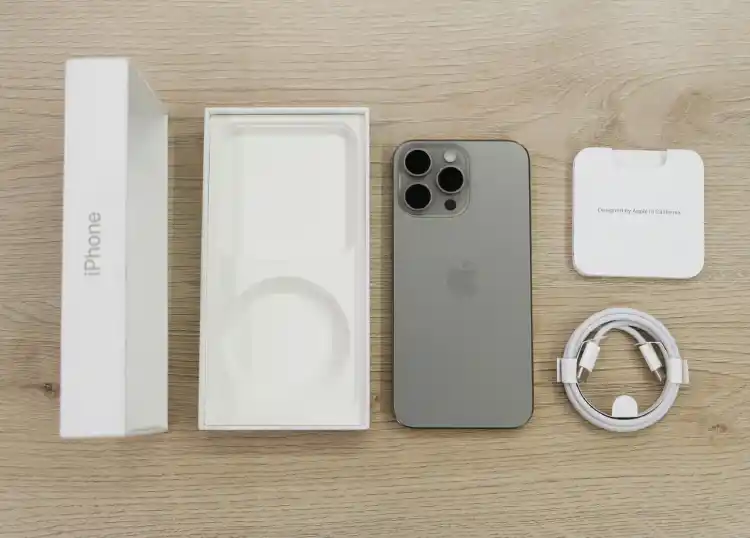In today’s fast-paced digital age, smartphones are more than just gadgets they are personal hubs for communication, entertainment, productivity, and creativity. Whether you’re considering the latest iPhone 16 Pro, switching to a new Android flagship, or opting for a budget-friendly device, choosing the perfect cell phone can feel overwhelming with so many options on the market.
This guide simplifies the process by exploring key features to compare, weighing budget vs. flagship models, understanding carrier-locked vs. unlocked phones, and discussing essential accessories and maintenance.

Key Features to Compare (Camera, Battery, OS)
When selecting a smartphone, focusing on the right features can help you narrow down your options.
Camera Quality
For many users, the camera is one of the most important considerations:
- High-resolution lenses: Devices like the iPhone 16 Pro boast advanced camera systems with multiple lenses for ultra-wide, telephoto, and low-light photography.
- AI enhancements: Newer models use AI to improve photo quality, stabilize video, and enhance night mode performance.
- Video recording: Look for features like 4K or even 8K video, slow-motion capture, and cinematic stabilization if you’re into content creation.
Pro tip: If photography is a priority, compare sample images and reviews from tech reviewers rather than relying solely on megapixel counts.
Battery Life
No one wants a phone that dies halfway through the day.
- Battery capacity: Measured in mAh (milliamp hours), a higher number typically means longer battery life.
- Charging speed: Features like fast charging or wireless charging can make a big difference for busy lifestyles.
- Energy efficiency: Operating systems like iOS and Android optimize performance to conserve battery over time.
Operating System (OS)
The OS shapes your entire smartphone experience:
- iOS (Apple): Known for its sleek design, seamless ecosystem (especially if you use other Apple products), and frequent updates.
- Android (Google/Samsung/Others): Offers more customization options and a variety of devices across different price ranges.
Pro tip: Consider what other devices you own sticking within one ecosystem (Apple, Google, Samsung) can make syncing and sharing between devices much easier.
Budget vs. Flagship Models
The debate between buying a budget phone or a flagship model is all about balancing features with affordability.
Flagship Phones

Flagship models, like the iPhone 16 Pro or Samsung Galaxy S series, are packed with the latest technology:
- Top-tier processors: Faster performance for gaming, multitasking, and apps.
- Premium build quality: Durable materials like titanium or Gorilla Glass Victus.
- Advanced features: Better cameras, higher refresh-rate displays, and improved 5G connectivity.
Drawback: These devices often come with high price tags, though many carriers now offer monthly payments or installment plans to make them more accessible.
Budget Phones
Budget-friendly phones provide excellent value:
- Affordable pricing: Great for users who need basic functionality without breaking the bank.
- Solid performance: Mid-range processors now handle most daily tasks with ease.
- Decent cameras and batteries: While they may not match flagships, many budget phones still deliver respectable photo quality and all-day battery life.
Pro tip: If you don’t need cutting-edge features, a mid-range phone can meet most needs at a fraction of the cost.
Essential Accessories and Maintenance
A smartphone is a big investment protecting and maintaining it can extend its lifespan and improve your overall experience.
Must-Have Accessories
- Protective case: Prevents damage from drops and scratches.
- Screen protector: Guards against cracks and smudges.
- Wireless earbuds: Perfect for hands-free calls and entertainment on the go.
- Portable charger: Ensures your device stays powered during long days.
- MagSafe or wireless chargers: Especially useful for iPhone users.
Maintenance Tips
- Regular software updates: Keep your OS updated to ensure security and performance improvements.
- Battery care: Avoid overcharging and try to keep your battery between 20–80% for optimal longevity.
- Cleaning: Wipe down your device with a microfiber cloth and avoid harsh chemicals.
Pro tip: Back up your data regularly cloud storage or external drives can save you from losing important files in case of damage or theft.
Making the Purchase: Installments vs. Upfront
If a new flagship like the iPhone 16 Pro is on your wishlist, consider your payment options:
- Installments: Many carriers and retailers offer plans to spread the cost over 12–36 months, making high-end phones more affordable.
- Upfront Payment: Paying in full may unlock discounts, reduce your monthly expenses, and give you complete ownership from day one.
- Trade-In Programs: Exchange your old device for credit toward your new phone, lowering the overall cost.
Pro tip: If you’re going with monthly payments, review the total cost over time it might be higher than buying outright.
Looking Ahead
Choosing the perfect cell phone doesn’t have to be complicated. Start by identifying the features that matter most to you whether that’s a pro-level camera like the one on the iPhone 16 Pro, all-day battery life, or the flexibility of an unlocked device. Decide whether you want the top-tier performance of a flagship model or the value of a budget-friendly phone, and consider payment options like installments or monthly payments if you’re aiming for a high-end device.
With the right combination of features, pricing plan, and accessories, you can find a smartphone that meets your needs and enhances your daily life.
As smartphones evolve beyond anything we’ve seen before, 2026 promises to be a year of seamless innovation – from ultra-flexible displays to AI that anticipates your needs. Whether you’re searching for the latest foldable phone, wireless accessories, or future-ready gadgets, explore the newest tech trends and smart shopping tips at playgams.com.
